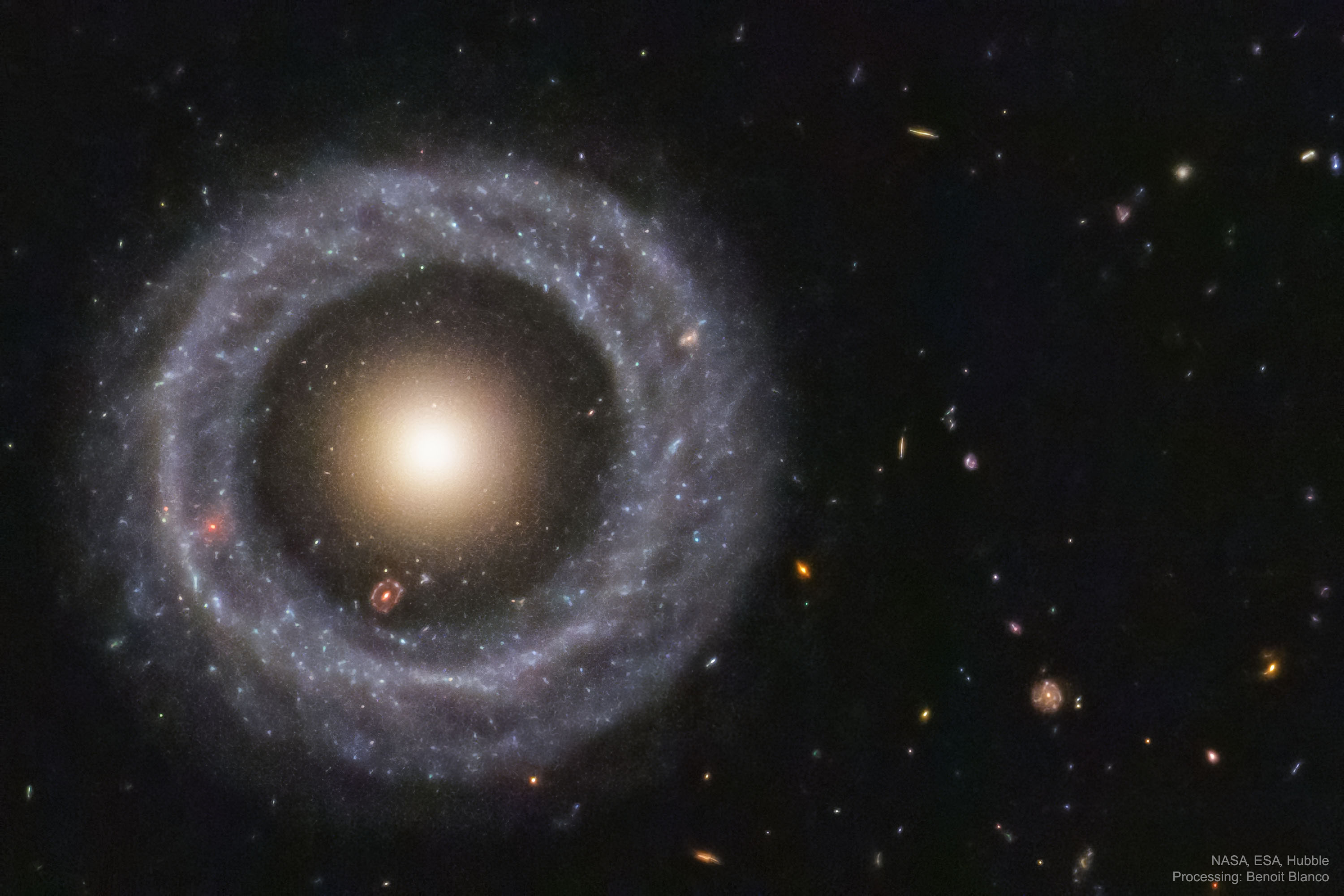
Posted on 10/08/2025 12:19:48 PM PDT by MtnClimber
Explanation: Is this one galaxy or two? This question came to light in 1950 when astronomer Arthur Hoag chanced upon this unusual extragalactic object. On the outside is a ring dominated by bright blue stars, while near the center lies a ball of much redder stars that are likely much older. Between the two is a gap that appears almost completely dark. How Hoag's Object formed, including its nearly perfectly round ring of stars and gas, remains unknown. Genesis hypotheses include a galaxy collision billions of years ago and the gravitational effect of a central bar that has since vanished. The featured photo was taken by the Hubble Space Telescope and reprocessed using an artificially intelligent de-noising algorithm. Observations in radio waves indicate that Hoag's Object has not accreted a smaller galaxy in the past billion years. Hoag's Object spans about 100,000 light years and lies about 600 million light years away toward the constellation of the Snake (Serpens). Many galaxies far in the distance are visible toward the right, while coincidentally, visible in the gap at about seven o'clock, is another but more distant ring galaxy.
For more detail go to the link and click on the image for a high definition image. You can then move the magnifying glass cursor then click to zoom in and click again to zoom out. When zoomed in you can scan by moving the side bars on the bottom and right side of the image.

🪐 🌟 🌌 🍔
I don’t think I’ve ever seen that one before. Awesome.
Like a nucleus with orbiting electrons.
Even with the shutdown, I hope somebody’s keeping an eye on the huge UFO that’s coming to transport us back to their planet.
NICE!
Gorgeous.
Even though ring galaxies are somewhat rare, this is one seen through another one, from our vantage point.
Nice!
“Hoag’s Object” the reload.
Thanks!
3i-Atlas just made its closest approach to any planet. Probes in orbit around Mars did take pictures. Supposedly even one of the Rovers on Mars, Perseverance, got a picture.
In case you run out of ideas, I have a couple of suggestions, two of my favorites- NGC 457, the E.T. Cluster (also known as Owl Cluster),in Cassiopeia, and NGC 869 and NGC 884, the Double Cluster in Perseus. They are neat. The Double Cluster is visible in binoculars.
I just looked, APOD doesn’t have a submission for NGC 457…
That’s amazing! Glad you dug it up and shared it :)

Disclaimer: Opinions posted on Free Republic are those of the individual posters and do not necessarily represent the opinion of Free Republic or its management. All materials posted herein are protected by copyright law and the exemption for fair use of copyrighted works.